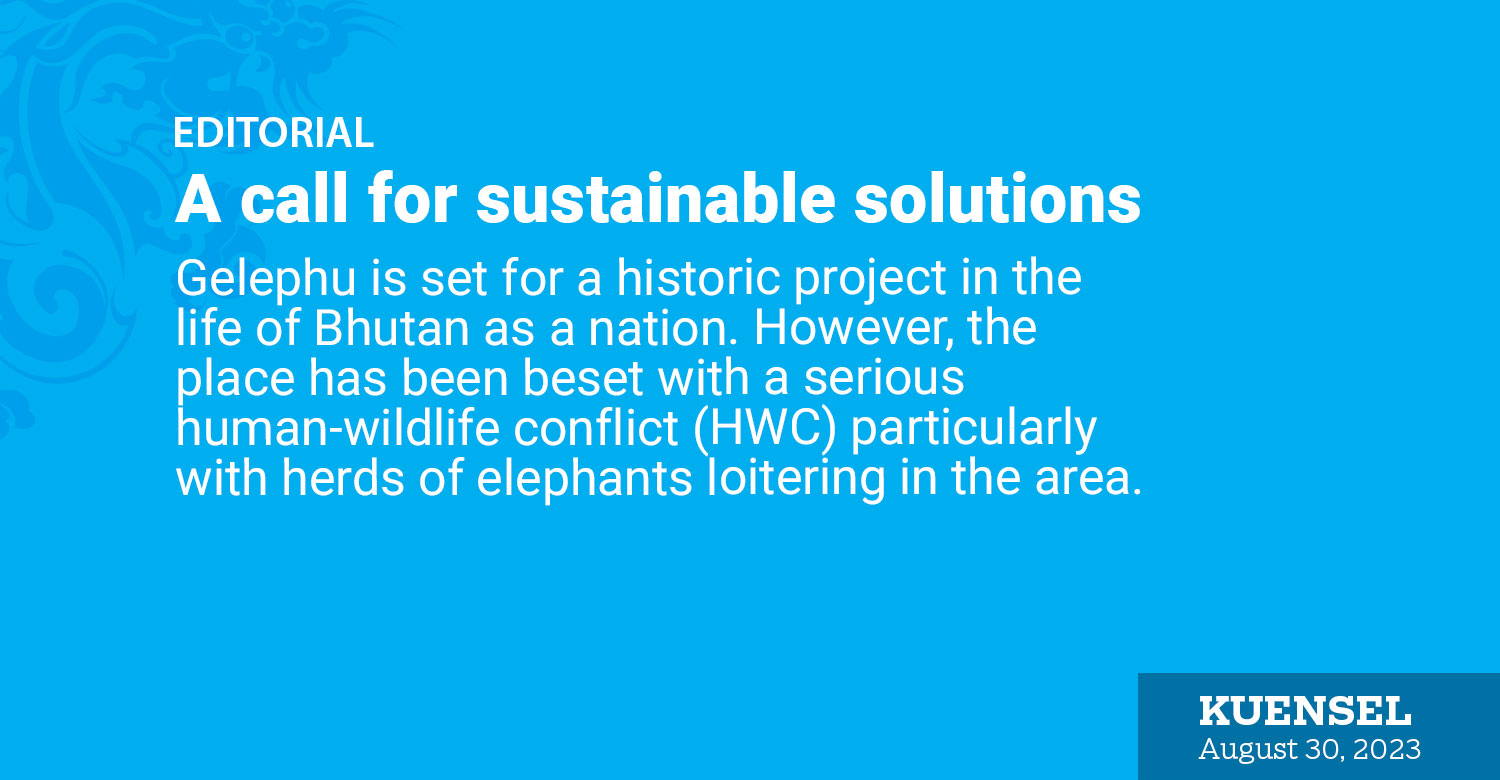Gelephu is set for a historic project in the life of Bhutan as a nation. However, the place has been beset with a serious human-wildlife conflict (HWC) particularly with herds of elephants loitering in the area.
Residents die annually when they confront the giants. Only earlier this month a monk was killed in Samtenling a few kilometres from the town. The herd of 15 elephants breaking into grocery stores in the town on August 26 is not only a financial loss but a stark reminder of the challenges posed by coexisting with wildlife and the gravity of the situation.
The recurring nature of such incidents calls for immediate action to mitigate the impact of HWC and find a balance between conserving biodiversity and safeguarding human lives and livelihoods.
The August 26 incident underscores the vulnerability of local businesses and the livelihoods they support. Such encounters reflect the changing behaviour of elephants, which pose not only economic risks but also potential threats to human lives. While efforts have been made to protect these establishments through fencing and lighting systems, the persistent resilience of these animals in bypassing these measures demands a deeper analysis of their motivations and patterns.
One promising step taken by authorities is the deployment of rapid response teams using firecrackers to deter elephants. However, it’s clear that this reactive approach is insufficient on its own. A more proactive strategy is needed, one that integrates a multi-faceted approach to mitigating HWC.
Singye and Shompangkha gewogs, where incidents of HWC are minimal due to the presence of well-maintained solar and electric fencing, offer valuable insights. Proper care and maintenance of these protective barriers can significantly reduce conflicts between humans and wildlife. It’s essential to allocate resources to ensure the effectiveness of these preventive measures, even in challenging terrain.
We can’t place the blame squarely on these otherwise gentle giants. This has been their homeland. Much before Gelephu and adjacent areas became a major human settlement.
However, given that the behaviour of elephants is changing, we need to step up the game from our side too and it is important to consider innovative solutions that deter elephants without causing harm. Research into non-lethal methods of elephant deterrence, such as scent-based repellents or sound-based devices, could yield positive results. By investing in technology and research, Bhutan can lead the way in developing humane methods to manage HWC. The forest division in the area manned by winners of the International Union for Conservation of Nature WCPA International Ranger Awards for this year no doubt has the capacity and the will.
Another key aspect is community involvement. Engaging them in discussions about effective strategies and mitigation efforts can yield solutions that are culturally sensitive and tailored to the specific needs of each region. Establishing channels of communication between communities, authorities, and conservationists can foster a sense of ownership and collaboration in addressing HWC. But if the landlords who live away don’t even clear their land of bushes, then local authorities also need to ensure that they do.
As we strive to find sustainable solutions, it’s crucial to strike a balance between wildlife conservation and human welfare. While protecting wildlife is an integral part of Bhutan’s environmental ethos, it should not come at the cost of human lives and livelihoods. The call for a monetary compensation program for damages to properties is a plea that cannot be ignored. The government must actively seek ways to provide support to those affected by HWC incidents, demonstrating its commitment to the well-being of its citizens.


